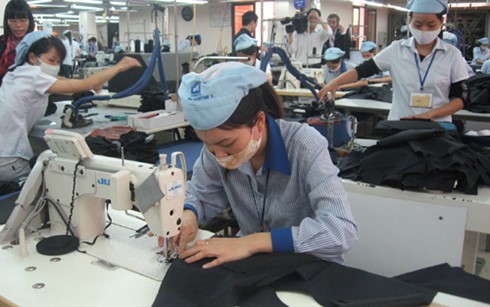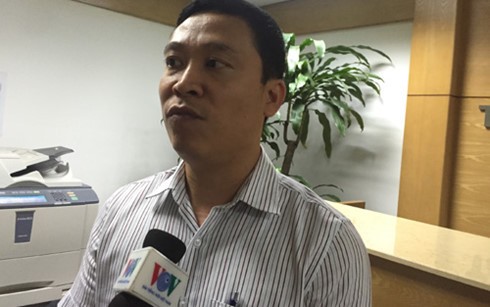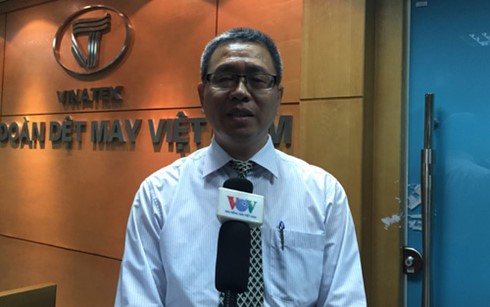(VOVworld) – The garment and textile sector has been contributing to Vietnam’s GDP, ensuring social security, and generating jobs for about 3 million people. During Vietnam’s international economic integration, Vietnamese companies in the sector have attached greater importance to improving their values increasing their competitiveness, and expanding their export market through intellectual property rights.
 |
| Vietnamese garments and textile companies will likely lose the market shares right at home if they can’t make full use of TPP advantages. |
The Garment 10 Corporation recognizes the importance of the role of brand building and registered its own brand name in 1992. The company remains one of 50 garment and textile businesses that has not registered an industrial patent or invention protection for its products.
 |
| Than Duc Viet, the Garment 10 Corporation’s deputy director. |
Than Duc Viet, the corporation’s deputy director, explained: “we know the registration and protection of industrial design is a decisive factor to protect our products against counterfeit goods. But the point is that it will cost a lot to register the protection for hundreds of fashion products each season. We’re still slow at turning out products.”
Nguyen Sy Phuong of the Vietnam Garment and Textile Group said that protecting intellectual property rights, including trademarks, inventions, and industrial designs, not only improves a business’ competitiveness, but also protects the interests of legitimate owners of the trademark when a conflict occurs, and gives enterprises advantages in M&A transactions.
Phuong said many Vietnamese garment and textile companies still depend too much on sales and distribution rather than developing a brand for their products.
“Vietnam’s garment and textile sector is facing many challenges in the domestic market caused by the increasing pressure of pricing, quality, and product design. Domestic companies are also under pressure from foreign rivals, illegally imported, counterfeit products, and goods of low quality,” according to Phuong.
 |
| Le Ngoc Lam, Deputy Director of the Department of Intellectual Properties. |
Le Ngoc Lam, Deputy Director of the Department of Intellectual Properties, said because garments and textile products can be imitated, IP is an useful tool to protect enterprises.
He said: “businesses need to register for IPR protection both at home and abroad because the protection is valid only within the territory of one country. If they obtain a registration, Vietnamese companies will be protected when their products are infringed in registering countries. In the future when the TPP agreement takes effect, IPR infringements, especially violations relating to copyright and neighboring rights or forged brands, will be prosecuted criminally.”
While Vietnam has been signing major trade agreement and integrating internationally, domestic garment and textile companies have changed from processing to self production and development of products that have their own brand. The improved use of IPR will help Vietnamese businesses boost their value and reduce the risk of being overwhelmed in their home market.